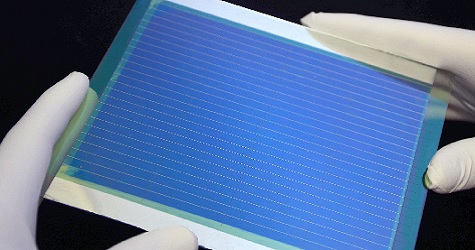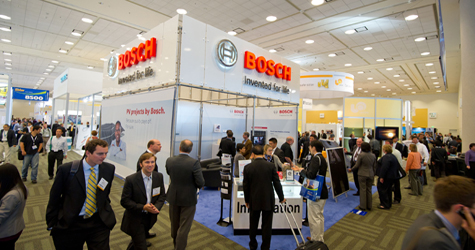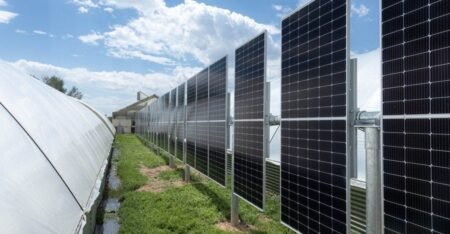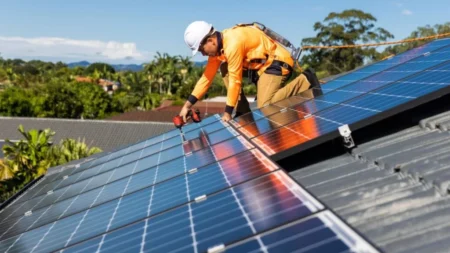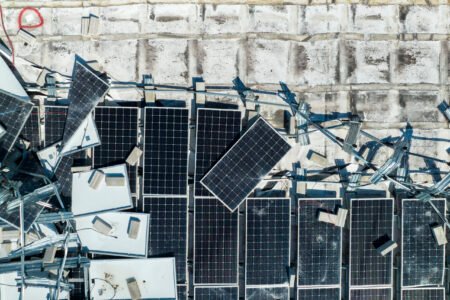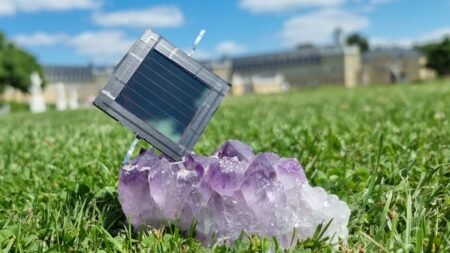Innovations in Materials and Structure Support Breakthrough Achievement in Organic Solar Cells.
Leuven (Belgium)—(March 11, 2014)—In this week’s Nature Communications imec presents the development of fullerene-free organic photovoltaic (OPV) multilayer stacks achieving a record conversion efficiency of 8.4 percent. This breakthrough achievement is an important step to bring organic photovoltaic cells to a higher level in the competitive thin-film photovoltaics marketplace.
Organic solar cells are an interesting thin-film photovoltaic technology due to their compatibility with flexible substrates and tunable absorption window. Although the power conversion efficiency of organic solar cells has increased rapidly in the last decade, further enhancements are needed to make the production of organic photovoltaics more easily scalable into industrial production processes. Imec’s organic solar cells with record 8.4 percent power conversion efficiency were realized by introducing two innovations. Firstly, the implementation of fullerene-free acceptor materials resulted in high open-circuit voltages and useful absorption spectra in the visible. Secondly, high short-circuit currents were achieved by developing a multilayer device structure of three active semiconductor layers with complementary absorption spectra, and an efficient exciton harvesting mechanism.
Fullerenes are the dominant acceptor materials in current OPV cells due to their ability to accept stable electrons and their high electron mobility. However, the small absorption overlap with the solar spectrum limits the photocurrent generation in fullerene acceptors, and their deep energy level for electron conduction limits the open-circuit voltage. Imec implemented two fullerene-free materials as acceptor, increasing open-circuit voltages compared to OPV cells with fullerene acceptors.
To increase the efficiency of organic solar cells, complex tandem architectures are often proposed to combine the exciton harvesting of multiple photo-active materials. The imec team now proposes a simple three-layer stack to improve the spectral responsivity range. This device architecture comprises two fullerene-free acceptors and a donor, arranged as discrete heterojunctions. In addition to the traditional exciton dissociation at the central donor-acceptor interface, the excitons generated in the outer acceptor layer are first relayed by energy transfer to the central acceptor, and subsequently dissociated at the donor interface. This results in a quantum efficiency above 75 percent between 400nm and 720nm. With an open-circuit voltage close to 1V, a remarkable power conversion efficiency of 8.4 percent is achieved. These results confirm that multilayer cascade structures are a promising alternative to conventional donor-fullerene organic solar cells.
These results were presented in Nature Communications (DOI: 10.1038/ncomms4406).
The research leading to these results has received funding from the European Community’s Seventh Framework Programme (FP7/2007-2013) under Grant Agreement 287818 (X10D) and under ERC Grant Agreement 320680 (EPOS CRYSTALLI), and from the INTERREG IV-A Euregio Maas-Rijn project ORGANEXT (EMR. INT4-1.2.-2009-04/054).
About imec
Imec performs world-leading research in nanoelectronics. Imec leverages its scientific knowledge with the innovative power of its global partnerships in ICT, healthcare and energy. Imec delivers industry-relevant technology solutions. In a unique high-tech environment, its international top talent is committed to providing the building blocks for a better life in a sustainable society. Imec is headquartered in Leuven, Belgium, and has offices in Belgium, the Netherlands, Taiwan, U.S., China, India and Japan. Its staff of more than 2,080 people includes more than 670 industrial residents and guest researchers. In 2012, imec’s revenue (P&L) totaled 320 million euro. Further information on imec can be found atwww.imec.be.Stay up to date on what’s happening at imec with the monthly imec magazine available on tablets and smartphones (as an app for iOS and Android) or via the website at www.imec.be/imecmagazine.
Imec is a registered trademark for the activities of IMEC International (a legal entity set up under Belgian law as a “stichting van openbaar nut”), imec Belgium (IMEC vzw supported by the Flemish Government), imec the Netherlands (Stichting IMEC Nederland, part of Holst Centre which is supported by the Dutch Government), imec Taiwan (IMEC Taiwan Co.) and imec China (IMEC Microelectronics (Shanghai) Co. Ltd.) and imec India (Imec India Private Limited).


